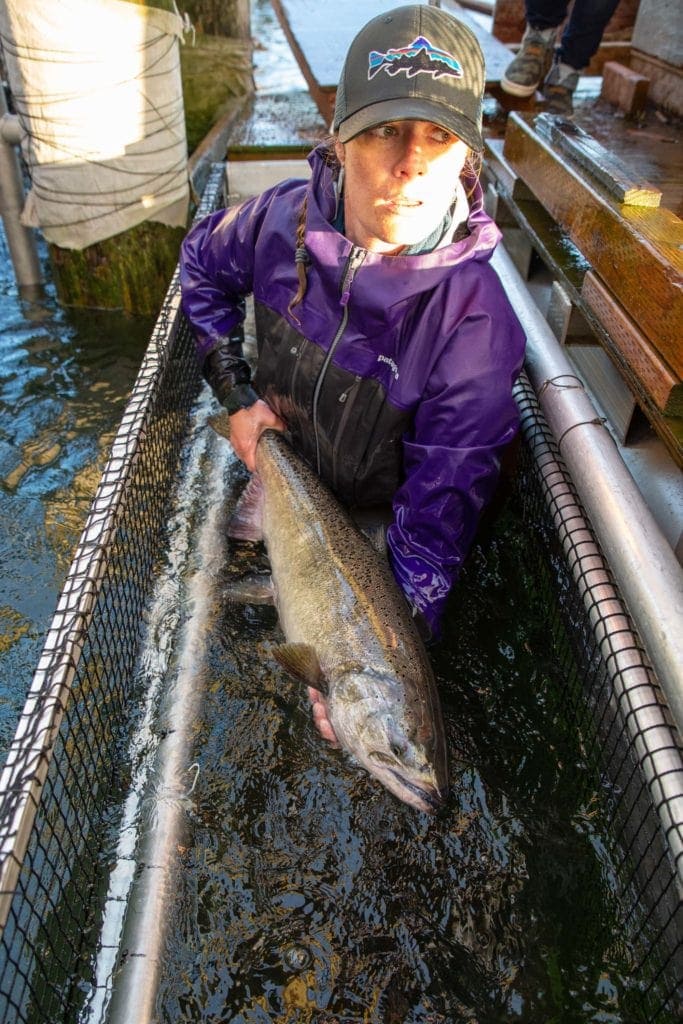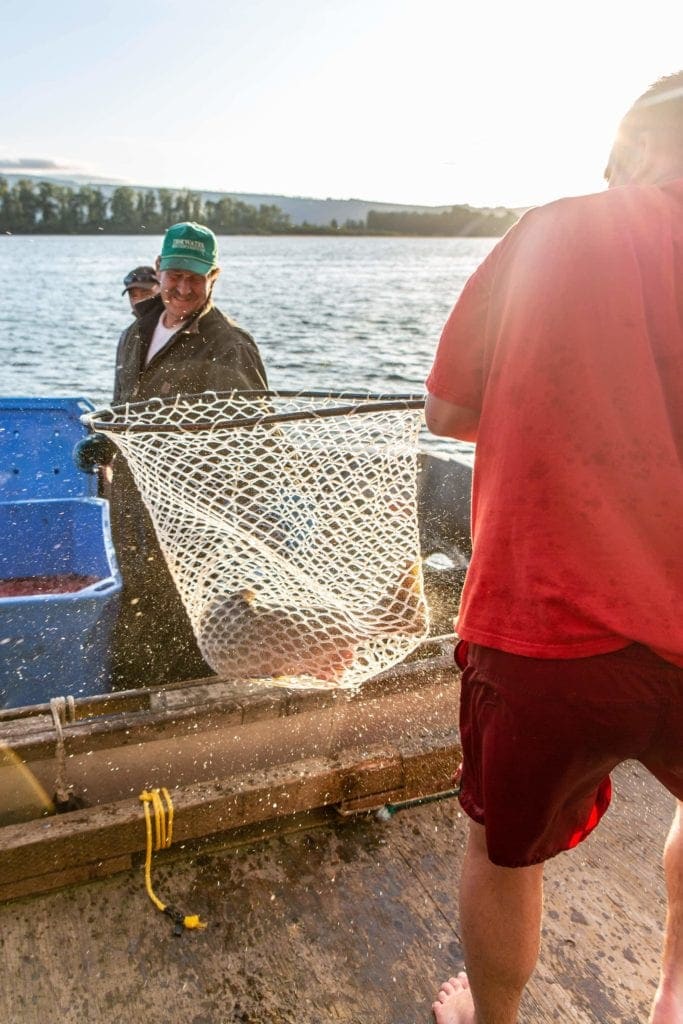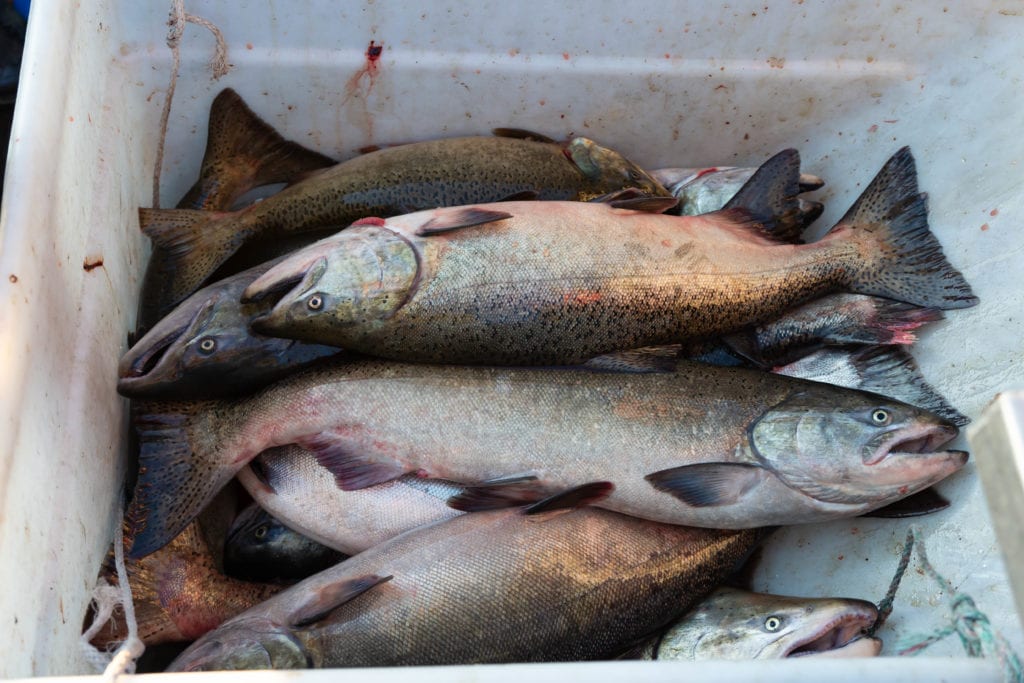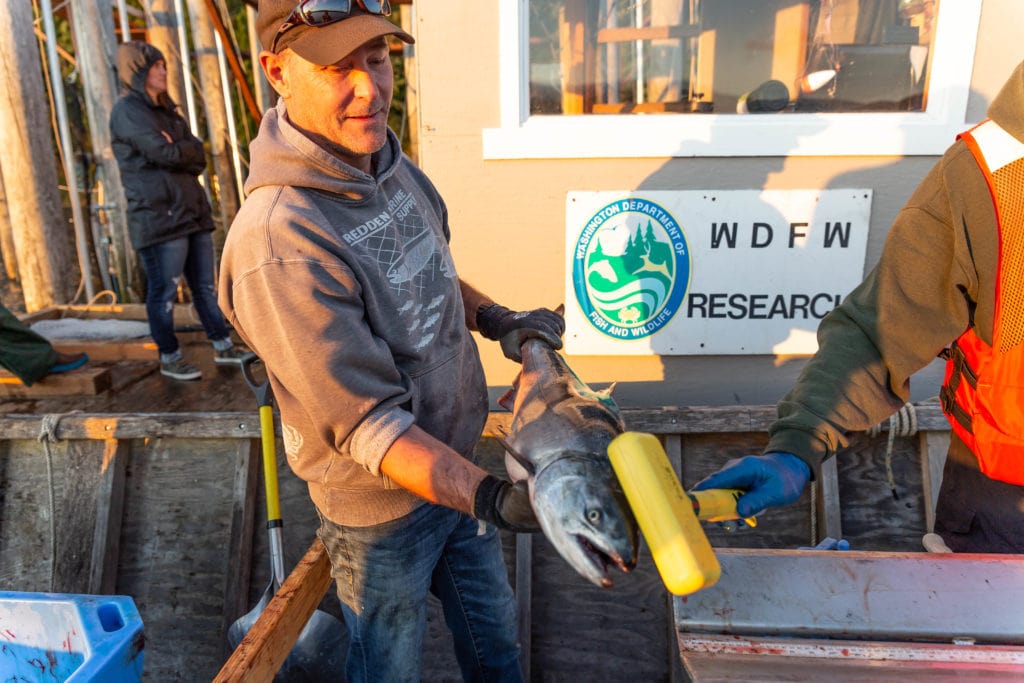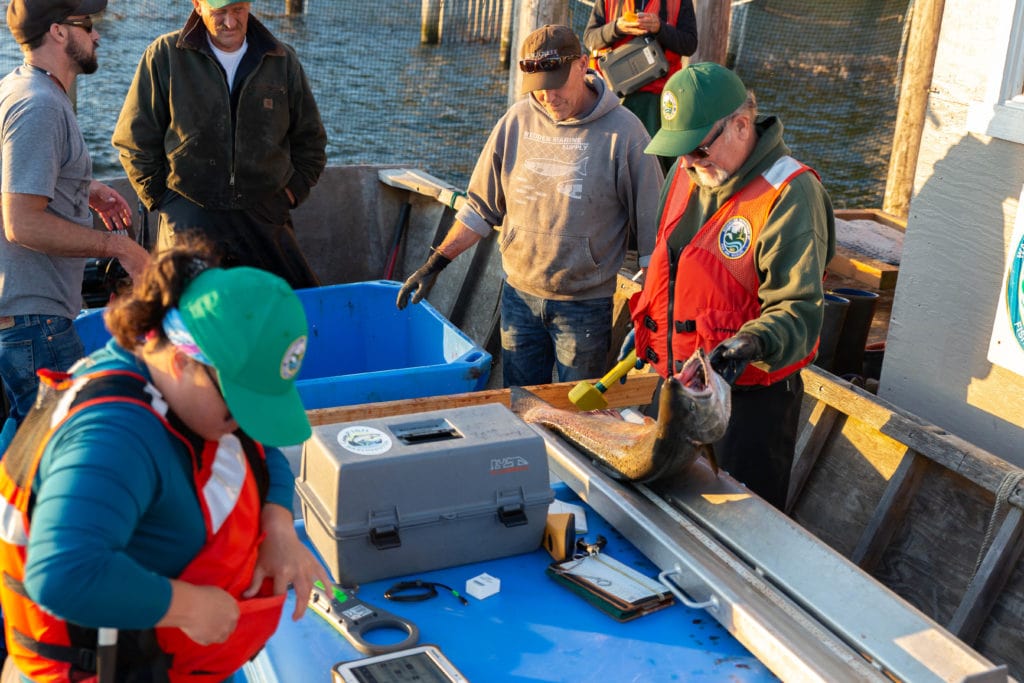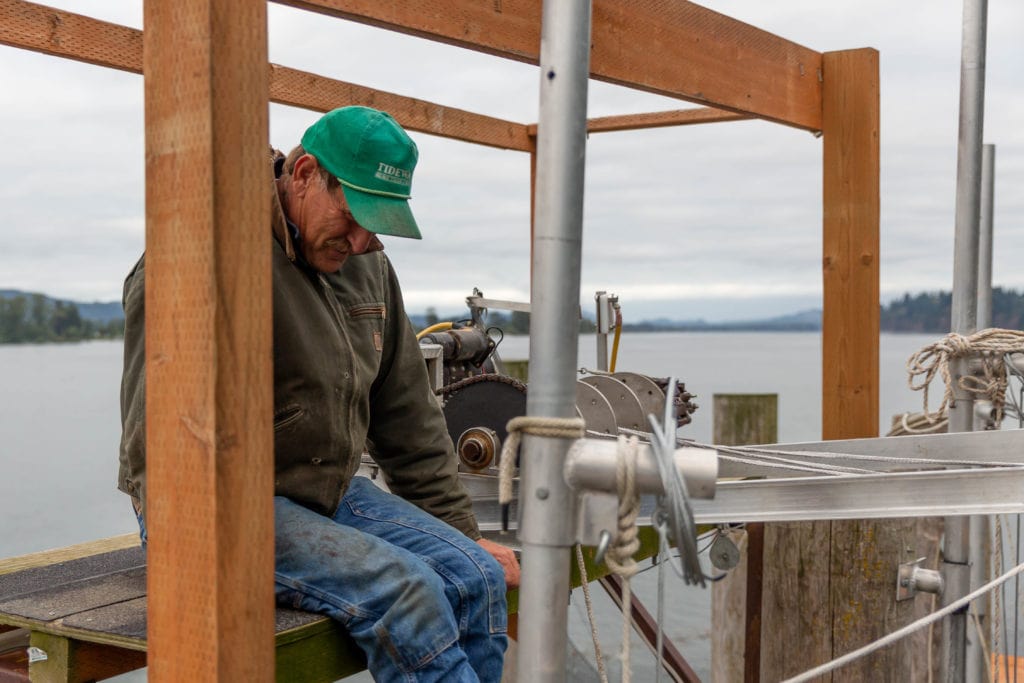Work is underway at the Columbia River fish trap, with Wild Fish Conservancy (WFC), local commercial fishers, processors, fish buyers, and the Washington Department of Fish and Wildlife (WDFW) collaborating to evaluate the feasibility of fish traps in a commercial, selective harvest setting. Earlier this summer, it was announced that WFC was one of five recipients nationwide of the Saltonstall-Kennedy Grant Award—a prestigious federal grant sponsored by NOAA Fisheries Service. This hard-earned award has funded WFC’s 2019 late-summer and early-fall research at the Columbia River fish trap and will help lay the foundation for a future sustainable fishery in the lower river.
During the test fishing project, WFC staff assists commercial fisherman Blair Peterson in trap operations. Peterson is the visionary behind the Cathlamet fish trap and is on site each day to selectively bleed, ice, and tender harvested hatchery-origin Chinook and coho salmon from the day’s catch. Peterson and WFC release all wild salmon and steelhead throughout operations, ensuring a successful migration upstream to protected and restored spawning grounds.
Throughout test fishing, the Washington Department of Fish and Wildlife (WDFW) oversees operations alongside WFC biologists to gather data on all released wild slamonids and harvested hatchery fish. This collaborative team of biologists investigates immediate survival of released fishes and utilizes the trap as a monitoring station to collect valuable genetic, stock-composition, and run-timing data in the lower Columbia River. This information can be used by State and Federal agencies to help manage the river’s fisheries and better achieve salmon recovery objectives.
During the evening, fish buyer and processor Mike Clark (owner of Cathlamet-based C&H Classic Smoked Fish) visits the trap to sort, weigh, and buy the days fresh catch. Clark brings his keen eye for high-quality, fresh-caught salmon to the operation, and supplies a sustainable product to the marketplace that consumers can trust. All harvested products are wild salmon and orca whale safe, meaning that harvested fish are hatchery-origin, all wild fish are safely released, and orca whales are not deprived of the resource (as all fish are harvested in-river, rather than an open ocean or marine environment where orca whales feed). Consumers are guaranteed that their dollar is contributing toward wild salmonid recovery and the removal of hatchery-origin fish that are known to damage wild fish populations both genetically and ecologically.
Since the test fishery project began in late-August, we have captured thousands of pounds of hatchery Chinook and coho while safely releasing an even greater catch of wild salmon. To date, not a single adult salmon or steelhead immediate mortality has occurred in the fishery. This is in great contrast to conventional gill net fisheries where all wild salmon (roughly 50% of catch) are likely to perish post-release and hence are approved for harvest by management agencies. This season’s work will help establish fish traps as a viable alternative gear, paving the way for a sustainable fishery in the lower Columbia River and giving fishermen an alternative fishing option in the face of increasingly stringent gill net fishing restrictions over wild salmonid management concerns.
WFC and WDFW will continue to provide updates throughout the season. In the meantime, the WFC field crew has set up a camera at the trap to record all hauls during test fishing. These videos are available free to the public. Viewers can watch the trap in real time, as well as previously recorded operations. To watch the videos, download the free Periscope app to your Apple or Android device and follow wildfishconservancy. From your home, you can view the process as each wild fish is released and hatchery fish are harvested to be brought to a market near you.
Thank you for your continued support!
